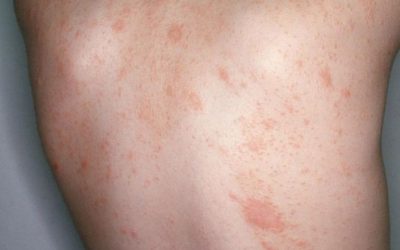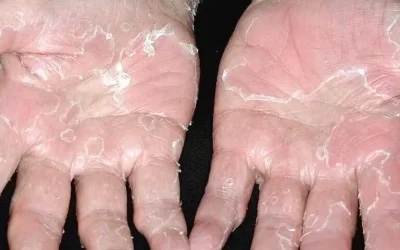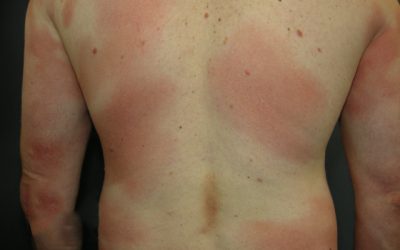Acne, what is it?
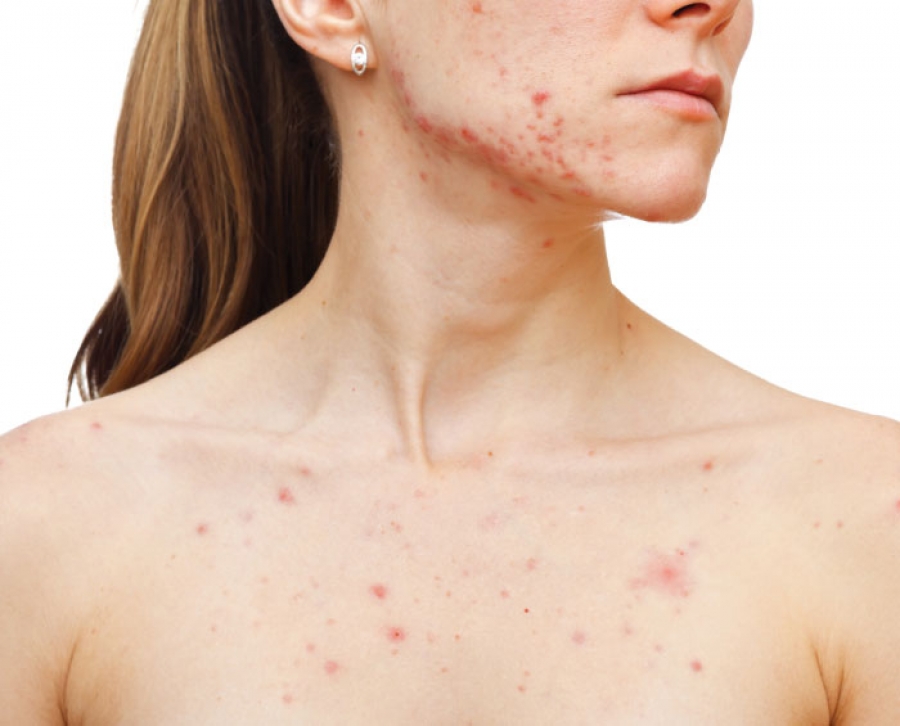
Acne (acne vulgaris) is a common chronic inflammatory skin disease involving damage to the hair follicle-fatty gland complex.
-
- Acne affects more than 9% of the world’s population.
- Acne usually starts before adolescence (between 7 and 12 years old) and disappears by the third decade, but it can persist or start in adulthood.
- Acne is most commonly found in men during adolescence and, conversely, more common in women after adolescence.
What causes acne?
Acne usually develops when a combination of several factors is present.
-
- Family predisposition (people with close family members with acne have a higher risk of acne)
- Endogenous and exogenous androgenic hormones.
- Cutibacterium (or Propionibacterium) acne bacterium
- Active immune response with inflammatory mediators
- Hair follicle dilation and occlusion
Factors that provoke and aggravate acne
-
- Hormonal changes (e.g. hyperandrogenism, polycystic ovary syndrome)
- Stress
- Ultraviolet (UV) rays
- A daily diet rich in dairy and high glycaemic index products
- Medicines (e.g. steroids, hormones, etc.)
- Use of occlusive cosmetics (e.g. oil-based)
- High body mass index
- Environmental pollution
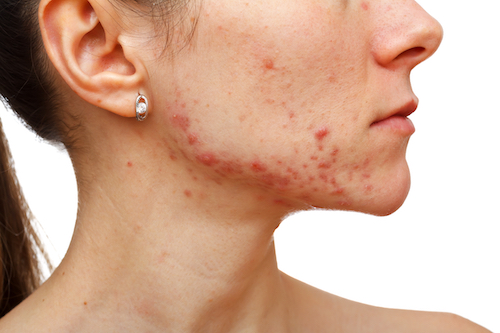
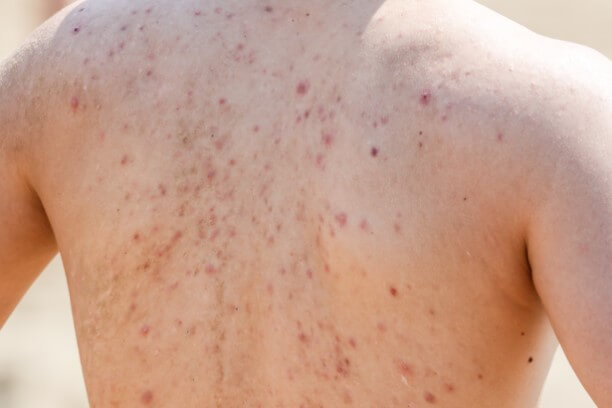
Localisation of rashes
Rashes are most common in the areas with the most sebaceous glands:
-
- face
- neck
- chest
- upper back and arms
Clinical forms
-
- Comedonal acne – closed and open comedones
- Papulopustular acne
- Nodulocystic and conglobate acne
Diagnostics
-
- We usually diagnose common acne on the basis of the clinical picture.
- There are no tests to confirm the diagnosis.
- Additional testing is carried out when hyperandrogenism or another specific condition that may lead to acne is suspected.
Treatment
-
- The aim of acne treatment is to control the disease, to ensure that the patient follows the prescribed treatment, to gradually adapt and change the treatment in time if there is no treatment effect or if an adverse drug reaction (ADR) occurs.
- Acne treatment is started only after determining the severity of the disease, the type of rashes that predominate, and the patient’s quality of life changes.
There are many treatments for acne vulgaris:
-
- non-medication (elimination and avoidance of provoking factors, adaptation of daily facial care products)
- medical (topical and systemic)
- alternative methods (e.g. photodynamic therapy, laser therapy)
-
- The most successful results are achieved with stepped and integrated treatment
- You should use the treatment for at least two to three months before assessing whether it is effective
Recommendations
-
- Wash your face no more than twice a day.
- Use warm water for washing, not hot water.
- Avoid oily skin products (often labelled as “non-comedogenic”, a “green line” for acne-prone skin).
- Do not mechanically press, scratch or touch the pimples (you can cause infection).
- Use sunscreen (more than SPF30).
- Follow the recommendations of your doctor.

1. Oge’ LK, Broussard A, Marshall MD. Acne Vulgaris: Diagnosis and Treatment. Am Fam Physician. 2019 Oct 15;100(8):475-484.
2. Eichenfield DZ, Sprague J, Eichenfield LF. Management of Acne Vulgaris: A Review. JAMA. 2021 Nov 23;326(20):2055-2067.
3.Nast A, Dréno B, Bettoli V, Bukvic M. Z, Degitz K, Dressler C, Gollnick H. European evidence-based (S3) guideline for the treatment of acne-update 2016-short version. Journal of the European Academy of Dermatology and Venereology. 2016, 30(8), 1261-1268.
Tags
Pityriasis rosea
An acute, self-limiting, exanthematic skin disease that manifests as itchy, somewhat inflammatory, scaly rashes, usually on the torso, chest, and upper limbs.
Peeling skin syndrome
Peeling skin syndrome is a genetic disorder characterized by constant peeling of the skin. The disease appears from birth or in the first year of life
lasts a lifetime
Mycosis Fungoides
The most common primary skin T-cell lymphoma (cancer of the blood). Mycosis Fungoides is characterized by three main stages, several of which may exist at the same time
iDerma
MB iDerma
Fabijoniškės g. 99, Vilnius
+370 670 70 822
[email protected]


